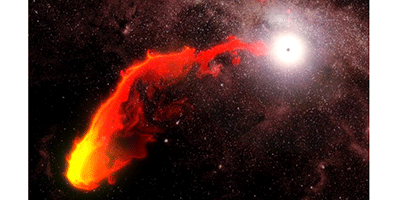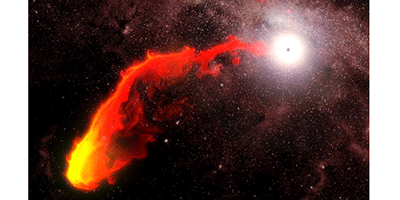Black-Hole Hunting with a Gas Cloud
Astronomers estimate that the center of our Galaxy is teeming with black holes. Detecting these highly compact objects is challenging, but an opportunity may arrive at the end of the summer in the form of a large gas cloud passing through the galactic center. If this cloud encounters a black hole in its path, the hole will devour some of the material, releasing x rays in the process. A new paper in Physical Review Letters calculates the odds of us seeing such an event.
Black holes and neutron stars can form when a massive star runs out of nuclear fuel and collapses onto itself. Over time, some of these objects migrate towards the center of the galaxy. Previous work has predicted that as many as black holes—and a similar number of neutron stars—may be hiding within a few light years of the galactic center.
One way to spot these burnt-out objects is to douse them with fresh “fuel” that lights up as it accretes onto the surface. Imre Bartos of Columbia University, New York, and colleagues consider the likelihood of such fireworks occurring inside a gas cloud, named G , which is currently swooping around the galactic center, with a closest approach scheduled for September 2013. The researchers calculate that this cloud, which is roughly three times wider than the orbit of Pluto, may encounter around ten black holes along its path. However, the x-ray signal from these events is probably detectable only in some special cases. Notably, current instruments could potentially observe G collisions with intermediate mass black holes, which are an unconfirmed class of objects times more massive than normal black holes. – Michael Schirber





